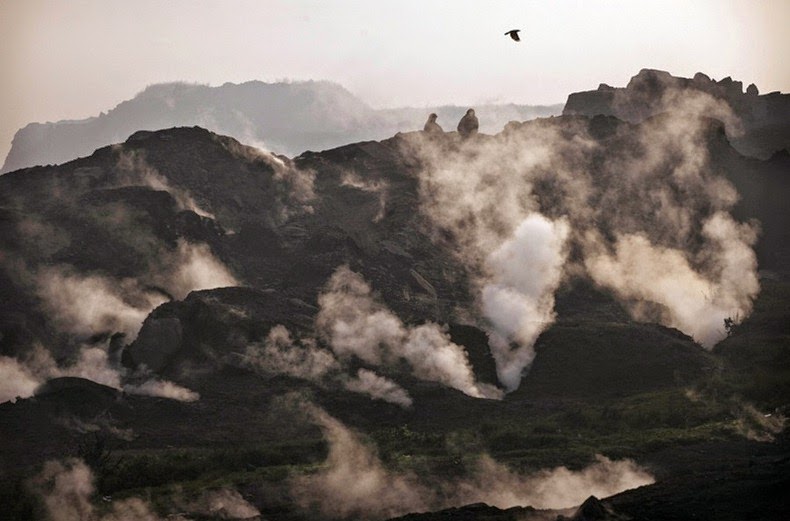
Coal can ignite spontaneously at rather low temperatures when exposed to certain conditions of temperature and oxygen. This may occur naturally or the combustion process may be triggered by other causes. In Jharai, a lot of mining is done illegally in open cast mines. Here coal is mined in right next to the houses, on the streets, on railway lines, and in the station itself. Ever since coal mines were nationalized in 1971, the villagers have been eking out a living pilfering coal they sell in the local market.
Conventionally after open cast mining, areas are refilled with sand and water so that the land can be cultivated again. This has never happened in Jharia, which lead to the coal seams coming into contact with oxygen and catching fire. Once a coal seam catches fire, and efforts to stop it an early stage fail, it may continue to burn for tens to hundreds of years, depending primarily on the availability of coal and oxygen. Jharia’s fires were first detected in 1916, and were caused primarily because of improperly decommissioned abandoned mines. Since then, a huge subterranean fire and more than 70 above ground fires have consumed about 41 million tons of coking coal, worth billions of dollars, not to mention the huge amount of greenhouse gases released to the air.

It is estimated that close to 1.5 billion tons of coal are inaccessible due to the fires burning. Jharia will continue to burn until effective fire prevention and extinguishment procedures are developed and employed or the coal burns itself out. But the government is nonchalant. Residents accuse the state coal company BCCL of letting the fires burn, hoping residents will leave so it can exploit the USD 12 billion worth of high-grade coking coal that sits below their land.
In 1996, the government undertook a massive relocation program to move all the residents of Jharia and surrounding fire-affected areas to Belgharia, a new settlement 8 km away. But Belgaria has no school, no medical care, no shops and no jobs. All they were promised were a measly Rs 10,000 (USD 167, in 2014 rates) in compensation and 250 days of work. No wonder, many decided to stay in Jharia despite the blazes, the smoke and the pollution.















Source
